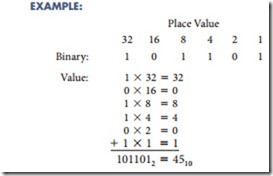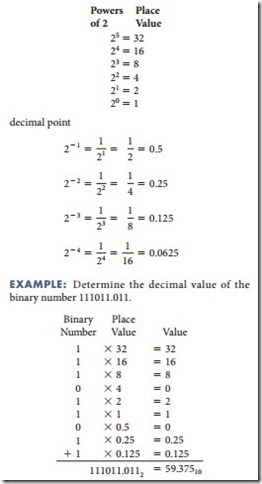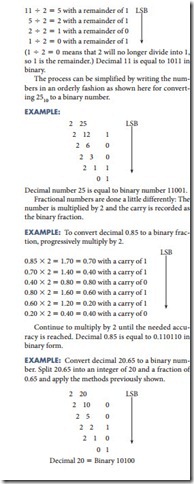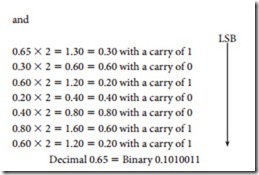Binary And decimal conversion
As stated, a binary number is a weighted number with a place value. The value of a binary number can be determined by adding the product of each digit and its place value. The method for evaluating a binary number is shown by the following example:
The number 45 is the decimal equivalent of the binary number 101101.
Fractional numbers can also be represented in bi- nary form by placing digits to the right of the binary zero point, just as decimal numbers are placed to the
right of the decimal zero point. All digits to the right of the zero point have weights that are negative powers of two, or fractional place values.
In working with digital equipment, it is often necessary to convert from binary to decimal form and vice versa. The most popular way to convert decimal numbers to binary numbers is to progressively divide the decimal number by 2, writing down the remainder after each division. The remainders, taken in reverse order, form the binary number.
EXAMPLE: To convert 1110 to a binary number, progressively divide by 2 (LSB 5 least significant bit).
Combining the two numbers results in 20.6510 5 10100.10100112. This 12-bit number is an approximation, because the conversion of the fraction was terminated after 7 bits.
Questions
1. What is the value of each position in an 8-bit binary number?
2. What is the value of each position to the right of the decimal point for eight places?



